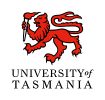Tasmania continues a 20-year tradition at the crest of the nation’s research computing capacity with the launch today of the Tasmanian eResearch Cloud.
The cloud will store important scientific data collections and also allow researchers to access enormous computing power from a standard desktop PC.
The $8.75 million project is the result of a collaboration between the University of Tasmania, CSIRO and Australian Antarctic Division. It is supported by both State and Federal governments.
It includes the Tasmanian node of the National eResearch Collaboration Tools and Resources Project (NeCTAR) research cloud, which will be one of eight nationally, federally funded by the Education Investment Fund.
University Vice-Chancellor Professor Peter Rathjen said the cloud was important in many ways, including its demonstration of the power of partnerships.
“None of the partners in this collaboration could have achieved this in isolation, but together we have accomplished something quite remarkable,” Professor Rathjen said.
“Infrastructure such as this is central to the University’s mission of being a research intensive institution and one of global significance.”
Professor Nathan Bindoff is a leading academic at the University of Tasmania’s Institute for Marine and Antarctic Studies. He is Director for the Tasmanian Partnership for Advanced Computing and led the development of the research cloud proposal.
The NeCTAR cloud comprises thousands of processors, each of which can run data analysis and simulations in parallel.
“Simulations and analysis of big data can take a long time,” Professor Bindoff said.
“Using the NeCTAR cloud, if you want to analyse something in 100 different ways, you can do that simultaneously.
“This will allow a significant acceleration in the amount of research we can conduct and the time it will take to do it.”
Investment in the Tasmanian node of NeCTAR was about $1 million which is, coincidentally, about the purchase price for a supercomputer the University bought in collaboration with the CSIRO in 1995.
At the time of purchase that computer was ranked in the world’s top 500, with 12 processors delivering 1.2 gigaflops (as measure of the speed at which the computer operates). Those specifications pale in comparison to the Tasmanian node, which has 2688 processors capable of more than 13,000 gigaflops.
“The facility allows researchers scale their analysis up as required, all on the fly. That’s the dynamic world we have entered with the research cloud,” Professor Bindoff said.
“What it means whether we are talking chemical science, or climate work or oceanography, we have the capacity to be competitive.”
NeCTAR is an Australian Government project established as part of the Super Science initiative by the Commonwealth of Australia, Department of Education and financed by the Education Investment Fund.






Recent Comments